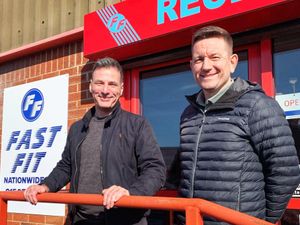Housebuilder Persimmon upbeat on housing outlook despite profit fall
Housebuilder Persimmon said strong house prices are offsetting cost inflation, though its half-year earnings declined.
The group, which has its regional office in Telford and is building homes across the West Midlands, said revenue in the half-year to June 30 fell 8.3 per cent to £1.69 billion from £1.84bn a year ago.
Completions during the half amounted to 6,652 new homes, down from 7,406 a year earlier, as expected.
Meanwhile, pre-tax profit declined 8.4 per cent to £439.7 million from £480.1m.
Persimmon said that "sales price inflation is currently mitigating the cost inflation the industry is experiencing". The new home average selling price was £245,597 during the period, up from £236,199 a year earlier.
The company said it has had a "robust" start to the second half, and backed guidance of 14,500 to 15,000 completions for the full year.
Dean Finch, group chief executive, said: "Persimmon continues to perform well. We are making important progress in quality, service, land investment opportunities and efficiencies to build an even stronger business, while continuing to deliver the strong financial returns that Persimmon is renowned for.
"Demand for our attractively priced, high quality homes has remained robust, with our average private sales rates for the period being one per cent ahead year on year.
"We have some exciting new sites coming into the business at industry-leading margins, with a land replacement rate for the period of over 130 per cent and expanded production in our own brick, tile and timber frame factories, is further enhancing our supply resilience and cost efficiency, enabling us to re-iterate our guidance of 14,500 to 15,000 legal completions for the full year.
"We are on track to achieve a 10 per cent increase in our active outlets by the end of the current year as we work to rebuild our outlet position after a land buying pause three years ago and are tackling the on-going challenges in the planning system.
"We are stepping up proactive engagement with local authorities, enhancing our approach to developing attractive communities and raising the bar on design to help mitigate planning challenges. We continue to expect our volume delivery to be significantly higher in the second half of the year."





